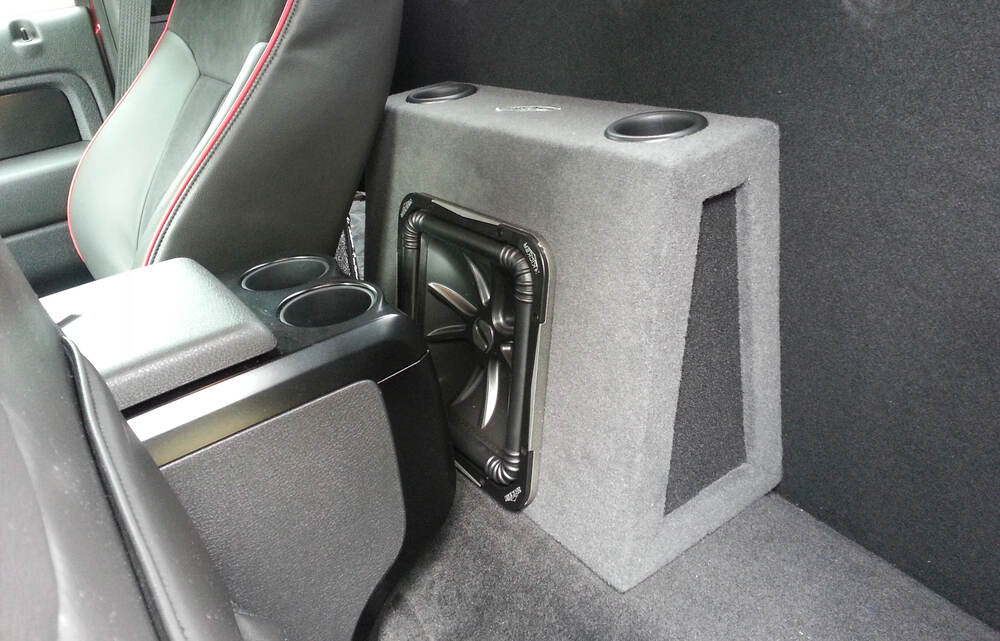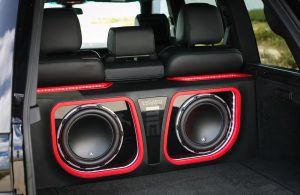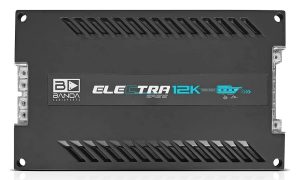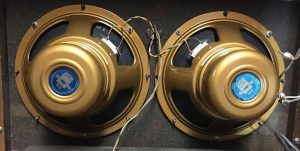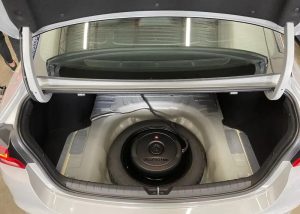A single cab truck offers a unique challenge and opportunity when building a high-quality sound system. Limited space demands creativity, while the compact cabin creates an intimate listening environment. With the right components and setup, you can transform your truck into a rolling concert hall. This guide walks you through crafting a single cab sound system that delivers crystal-clear audio, booming bass, and an immersive experience. Whether you’re a casual listener or an audiophile, these steps ensure your setup hits all the right notes.
Contents
- Why Choose a Single Cab for a Sound System?
- Step 1: Plan Your Audio Setup
- Step 2: Select the Right Head Unit
- Step 3: Choose High-Quality Speakers
- Step 4: Add a Subwoofer for Deep Bass
- Step 5: Power Your System with an Amplifier
- Step 6: Upgrade Your Wiring and Power Supply
- Step 7: Fine-Tune Your System
- Step 8: Maintain Your System for Longevity
- Common Mistakes to Avoid
- Recommended Brands and Products for Single Cab Setups
- Benefits of a High-Quality Single Cab Sound System
- Final Thoughts
Why Choose a Single Cab for a Sound System?
Single cab trucks, with their smaller interiors, provide a natural advantage for audio setups. Sound waves travel shorter distances, reducing distortion and creating a focused listening area. However, the tight space requires careful planning to avoid clutter and maintain comfort. A well-designed system balances power, clarity, and space efficiency, turning your truck into a mobile audio haven. Let’s dive into the key components and steps to achieve this.
Step 1: Plan Your Audio Setup
Before buying equipment, define your goals. Do you want heart-pounding bass for hip-hop tracks? Or do you prefer crisp vocals for country tunes? Knowing your priorities shapes your component choices. Consider these factors:
- Budget: High-end systems cost more, but budget-friendly options still deliver great sound.
- Music Preferences: Bass-heavy genres need powerful subwoofers, while classical music demands clear mids and highs.
- Space Constraints: Measure your cab to ensure components fit without sacrificing legroom.
- Power Needs: Check your truck’s electrical system to support amplifiers and subwoofers.
Planning prevents costly mistakes. For example, a subwoofer too large for your cab eats up space, while an underpowered amp distorts sound. Write down your preferences and measurements to guide your purchases.
Step 2: Select the Right Head Unit
The head unit serves as the brain of your sound system. It controls audio sources, settings, and connectivity. Modern head units offer features like Bluetooth, Apple CarPlay, Android Auto, and high-resolution audio support. Choose a single or double DIN unit based on your truck’s dashboard.
Look for these features:
- High Power Output: At least 50 watts per channel for clear sound without an external amp.
- Preamp Outputs: RCA outputs allow easy connection to amplifiers.
- EQ Settings: Customizable equalizers fine-tune sound to your cab’s acoustics.
- Smartphone Integration: Seamless streaming and hands-free calling enhance convenience.
Brands like Pioneer, Kenwood, and Alpine offer reliable options. For example, the Pioneer DEH-S6220BS provides Bluetooth and robust EQ controls, ideal for single cab setups. Install the head unit securely, ensuring easy access to controls while driving.
Step 3: Choose High-Quality Speakers
Speakers bring your music to life. In a single cab, door-mounted speakers are the most practical choice due to space limits. Opt for component speakers for superior sound quality or coaxial speakers for simpler installation.
Component vs. Coaxial Speakers
- Component Speakers: Separate woofers, tweeters, and crossovers deliver precise sound. They’re ideal for audiophiles but require more installation effort.
- Coaxial Speakers: Combine woofer and tweeter in one unit, making them easier to install. They suit casual listeners.
Select 6.5-inch or 6×9-inch speakers for most single cab trucks. Brands like Focal, JL Audio, and Rockford Fosgate offer excellent clarity. For instance, the JL Audio C2-650x coaxial speakers provide balanced sound in compact spaces. Ensure speakers match your head unit’s power output to avoid distortion.
To enhance sound, add sound-deadening material like Dynamat to door panels. This reduces vibrations and improves audio clarity, creating a tighter soundstage in your cab.
Step 4: Add a Subwoofer for Deep Bass
A subwoofer delivers the low-end punch that makes music immersive. In a single cab, space-saving subwoofers are key. Consider these options:
- Under-Seat Subwoofers: Compact models like the Kicker 11HS8 Hideaway fit under seats, delivering strong bass without sacrificing space.
- Custom Subwoofer Boxes: Build a box to fit behind seats or in a corner. Ensure it’s sealed or ported based on your bass preferences.
- Shallow-Mount Subwoofers: Brands like Pioneer and Alpine offer slim subs that produce deep bass in tight spaces.
Choose a subwoofer with at least 200-300 watts RMS for noticeable impact. Pair it with an amplifier to drive the sub effectively. For example, the Rockford Fosgate R2S-1X10 shallow-mount sub fits neatly in single cabs and delivers powerful lows.
When installing, secure the subwoofer to prevent movement. Test different placements to find the spot with the best bass response, as cabin acoustics vary.
Step 5: Power Your System with an Amplifier
An amplifier boosts your system’s output, ensuring loud, distortion-free sound. In a single cab, a compact multi-channel amp powers both speakers and subwoofers. Look for these specs:
- Power Rating: Match the amp’s RMS output to your speakers and subwoofer.
- Class D Amplifiers: These are efficient and generate less heat, ideal for small spaces.
- Compact Size: Brands like Alpine and Kicker offer amps that fit under seats or behind panels.
For instance, the Kicker CXA400.1 mono amp pairs well with a subwoofer, while a 4-channel amp like the Alpine BBX-F1200 powers door speakers. Install the amp in a ventilated area to prevent overheating, and use proper wiring gauges to handle power demands.
Step 6: Upgrade Your Wiring and Power Supply
High-performance audio systems demand robust wiring and power. Stock truck wiring often can’t handle the load, leading to voltage drops and poor sound. Follow these steps:
- Use a Wiring Kit: A 4-gauge or 8-gauge kit ensures adequate power delivery.
- Upgrade the Battery: A high-capacity battery or a second battery supports power-hungry systems.
- Add a Capacitor: A capacitor stabilizes voltage for consistent performance during bass-heavy tracks.
- Ground Properly: Secure ground connections to a clean metal surface to avoid noise.
Quality wiring reduces interference and maximizes efficiency. For example, a T-Spec V8-RAK4 wiring kit simplifies installation and ensures reliable power flow.
Step 7: Fine-Tune Your System
After installing components, fine-tuning optimizes sound quality. Use these techniques:
- Adjust the Equalizer: Boost or cut frequencies to match your cab’s acoustics. For instance, reduce mid-bass if the sound feels muddy.
- Set Crossovers: Direct low frequencies to the subwoofer and highs to speakers for balanced output.
- Balance and Fade: Adjust settings to center the soundstage on the driver.
- Test with Familiar Tracks: Play songs you know well to identify areas needing adjustment.
Many head units and amps include built-in tuning tools. If you’re unsure, consult a professional car audio installer for precise calibration.
Step 8: Maintain Your System for Longevity
A great sound system requires upkeep to stay in top shape. Follow these tips:
- Clean Components: Dust speakers and the head unit regularly to prevent buildup.
- Check Connections: Inspect wiring and mounts periodically to ensure they’re secure.
- Avoid Overloading: Don’t push your system beyond its limits, as this causes distortion and damage.
- Protect from Elements: Use weatherproof covers for subwoofers and speakers if your truck is exposed to moisture.
Regular maintenance keeps your system sounding pristine for years, whether you’re cruising city streets or tackling off-road trails.
Common Mistakes to Avoid
Building a single cab sound system comes with pitfalls. Steer clear of these:
- Overloading the Electrical System: Upgrade your alternator or battery if adding high-powered components.
- Choosing Oversized Components: Large subwoofers or amps waste space and reduce comfort.
- Skipping Sound Deadening: Without it, road noise and vibrations degrade audio quality.
- Ignoring Tuning: Untuned systems sound unbalanced, wasting the potential of quality components.
By planning carefully and following best practices, you avoid these issues and create a system that performs flawlessly.
Recommended Brands and Products for Single Cab Setups
To simplify your choices, here’s a list of trusted brands and products tailored for single cab trucks:
- Head Units: Pioneer DEH-S6220BS, Kenwood KMM-BT328U, Alpine UTE-73BT
- Speakers: JL Audio C2-650x, Focal Access 165 AS, Rockford Fosgate R165X3
- Subwoofers: Kicker 11HS8 Hideaway, Rockford Fosgate R2S-1X10, Alpine S-W10D4
- Amplifiers: Kicker CXA400.1, Alpine BBX-F1200, JL Audio JD400/4
- Wiring Kits: T-Spec V8-RAK4, Kicker PK8, Rockford Fosgate RFK4X
These products balance performance, size, and value, making them ideal for compact truck cabins.
Benefits of a High-Quality Single Cab Sound System
Investing in a premium audio setup transforms your driving experience. Here’s why it’s worth the effort:
- Enhanced Enjoyment: Music sounds richer, making long drives or commutes more enjoyable.
- Personalized Sound: Tailor the system to your taste, from booming bass to crisp highs.
- Increased Vehicle Value: A well-installed system boosts your truck’s appeal if you sell it.
- Immersive Experience: Feel like you’re at a live concert, even in traffic.
A great sound system turns your single cab into a sanctuary of sound, elevating every journey.
Final Thoughts
Crafting a single cab sound system requires careful planning, quality components, and precise tuning. By selecting the right head unit, speakers, subwoofer, and amplifier, you create a setup that delivers powerful, clear audio in a compact space. Upgrade wiring, add sound deadening, and fine-tune settings to maximize performance. With the right approach, your truck becomes a mobile audio powerhouse, offering an unmatched listening experience.
Ready to start? Measure your cab, set a budget, and choose components that match your music style. Whether you’re blasting rock anthems or chilling with jazz, a custom sound system makes every drive unforgettable. Hit the road and enjoy the ride—your ears will thank you.
